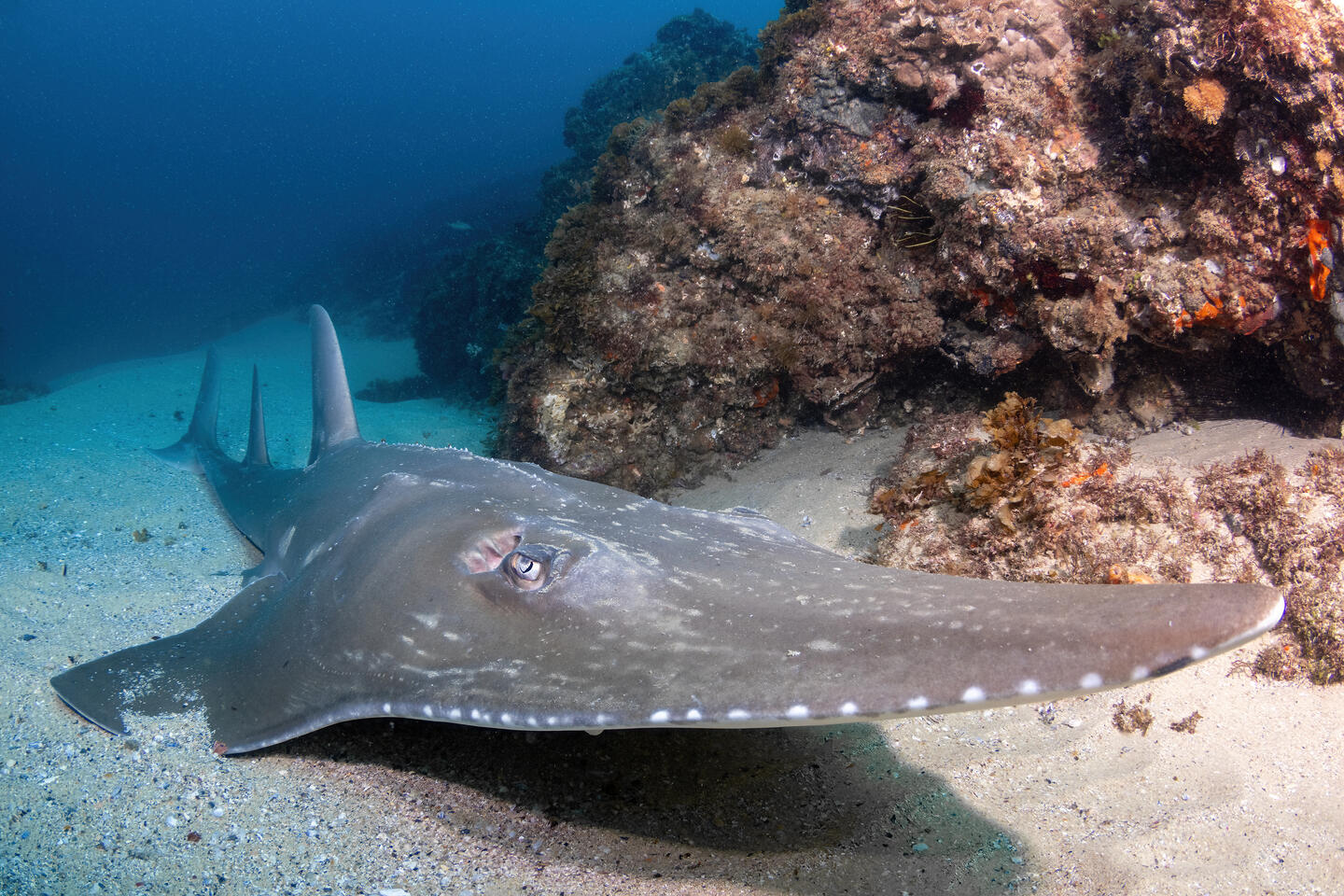Paying fishers to release endangered species after they are caught may seem like a win-win for conservationists and fishing communities, but a new Johns Hopkins University study reveals a troubling flaw: Participants in one such program in Indonesia sought to boost their payouts from releasing endangered sharks by catching more of them—exposing a risk that could undermine similar conservation efforts worldwide. The study results appeared in Science Advances.
"Pay-to-release schemes for endangered species caught by local fishers are being implemented around the world, yet these schemes tend to be implemented without anyone asking whether they actually make a difference to the catch of endangered species," said study co-author Paul Ferraro, Bloomberg Distinguished Professor in Human Behavior and Public Policy at Johns Hopkins. "It is concerning that so much money continues to be spent on conservation programs without rigorous evaluations of their impacts on biodiversity and socio-economic outcomes."
Key Takeaways
- Paying fishers to release endangered species backfired when they caught more to earn the release money.
- The program increased hammerhead shark deaths by 44% and saved fewer wedgefish than expected.
- Conservation programs need better testing and adaptation when not working.
Ferraro, who has appointments in the Carey Business School and the Department of Environmental Health and Engineering in Whiting School of Engineering and Bloomberg School of Public Health, and a team from Oxford University worked with local nongovernmental organization Kebersamaan Untuk Lautan to evaluate a pay-to-release program that paid small-scale Indonesian fisheries for releasing critically endangered hammerhead sharks and wedgefish. These two species are threatened by overfishing and are often unintentionally caught during fishing for other species.
The team evaluated results from 87 vessels, which were split into two groups: an incentivized group eligible to be compensated for live releases, and a control group not initially eligible. After a few months, the groups swapped roles, enabling the control group to become eligible for payments. To prove the live releases, the fishers recorded them on program-provided cameras.
After 16 months, researchers found vessels had released hundreds of wedgefish and hammerheads. However, some vessels increased their catches of these species to earn more payments, undermining the program's environmental benefits. The payments incentivized catching more wedgefish, some of which died before release, resulting in a mortality reduction of less than 50% of what the release numbers suggested. Worse, hammerhead mortality rose 44% due to increased catch and their poor lung function, making them likely to die before release.
Ferraro, who helped the research team analyze their data, said these findings highlight the risk of misaligned incentives, in which well-intended payments may end up encouraging the very outcomes they are meant to prevent.
He notes that "a culture of experimentation" is essential to properly oversee conservation programs. Since 2006, he's argued that incentives should be built not only into the programs themselves but also into how their effectiveness is evaluated.
"In environmental science and practice, we are rewarded for 'wow' results that are game changers," Ferraro said. "Environmental scientists and program implementers aren't rewarded for evidence, particularly for evidence about what does not work to solve environmental problems. This problem isn't specific to environmental science and practice, but in other fields, they've paid greater attention to finding ways to reward or require evidence. For example, medical treatments, drugs, and interventions are typically required to be tested before they're allowed to go on the market."
Ferraro maintains that environmental science and practice should adopt the "test, learn, adapt" culture often found in the tech industry.

Image caption: Smoothnose wedgefish
Image credit: AndriiSlonchak / Getty Images
"You test an idea, you learn whether it works or not as expected, and then you adapt your program," he said. "Either you go back to the drawing board, or you say, OK, that seemed to work. Can I make it better? Can I change something else about what we're doing? This culture of experimentation would be the ideal where every new idea is a hypothesis to be tested. We don't have that culture in the environmental arena, and we suffer because of that."
However, he acknowledges that environmental studies have complexities that aren't present in other scientific fields.
"These combined human environmental systems, or so-called socio-environmental systems, are complex, with lots of moving parts, lots of dynamic relationships," he said.
As a result of the Oxford study, KUL placed caps on both compensation to fishers and the number of allowable compensated releases per vessel per week. They are also piloting a gear swap scheme to reduce the number of endangered species caught in the first place. The local response to these efforts has been positive, according to the Department of Marine Affairs and Fisheries of Aceh Jaya Regency.
"This initiative has had a tangible impact on strengthening the livelihoods of small-scale fishers, who form the backbone of coastal life in Aceh Jaya," said department head Teuku Ridwan. "We hope that the synergy between implementing organizations, fishing communities, traditional leaders, and local government continues to be strengthened to realize marine management that is just, sustainable, and rooted in local wisdom."






